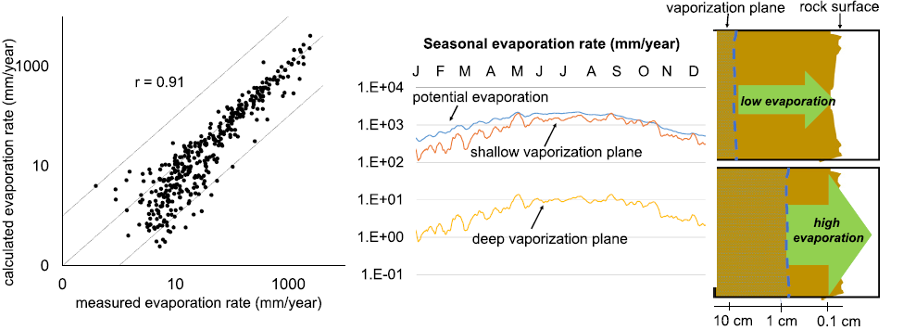
Evaporation from rocks is a poorly understood, yet important process. In the recent study, an evaporation rate from 10 lithologies, including sedimentary, igneous, and metamorphic granular rocks, was measured and calculated. The measured evaporation rate varied over four orders of magnitude (0.4–2447 mm/year), and the calculations reasonably followed the measured values. Within the range of observed values, the evaporation rate was mostly influenced by the vaporization plane depth below the rock surface (by up to 2.2 orders of magnitude), which was followed by: lithology (up to 1.1 order of magnitude), local climate (up to 1.0 order of magnitude), and climate seasonality (up to 0.8 order of magnitude). Thus, our study shows the key role of the vaporization plane depth in the evaporation rate. This approach can find employment in a large number of investigations such as in the evaporation estimates and hydrologic balance in rock landforms and rocky slopes, hydrologic processes in the shallow rock subsurface, living conditions of endolithic and epilithic organisms, weathering processes, and in the protection of carved or rock constructed cultural heritage.
Slavík M., Bruthans J., Schweigstillová J. (2018): Evaporation rate from surfaces of various granular rocks: Comparison of measured and calculated values. Science of the Total Environment 856, 159114. (DOI)








